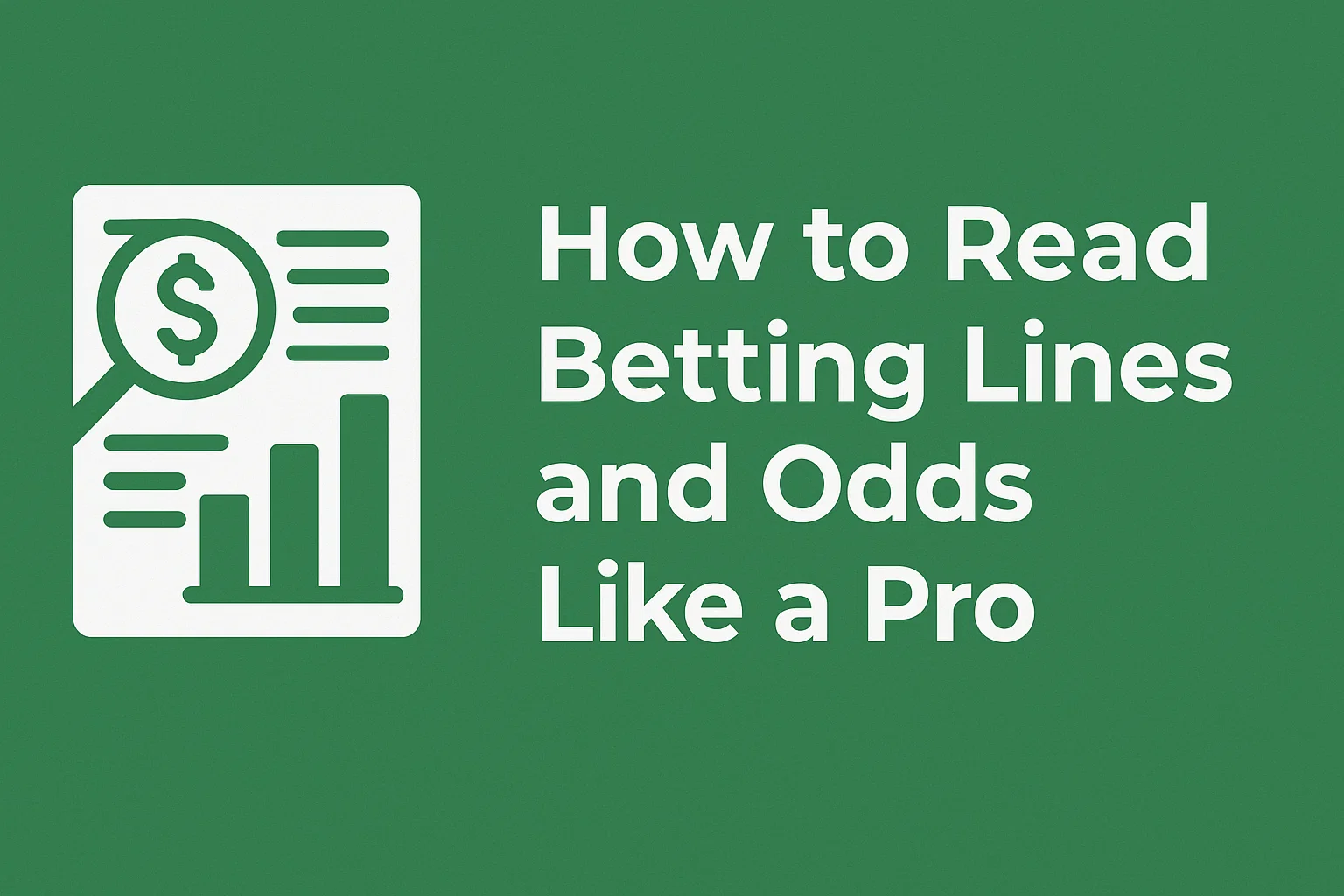How to Read Betting Lines and Odds Like a Pro

For starters, odds and betting lines may appear daunting at first sight. However, if one has to become proficient in sports betting in the long term, one must learn to read and interpret these lines correctly. Professional sports bettors don't just employ betting lines to see who the favorite team is but also to identify value and predict market movement.
Regardless of whether you bet on football, basketball, hockey, or another sport, or even step onto Oscars betting sites, odds knowledge gives you a clear competitive edge. In this article, we'll explain the most common lines to bet on – moneyline, point spread, and over/under – and how to use them to your advantage. The goal is to give you the information you need to read odds like a pro and be in a position to make educated decisions.
What Is a Moneyline?
Moneyline is the simplest form of odds, and it's often used in sports that don't involve a draw, such as American football or basketball. A moneyline tells you either how much you have to bet in order to win $100, or how much you can win if you bet $100 – depending on if the team is the favorite or the underdog.
Example:
- Team A: -150
- Team B: +130
Here you must bet $150 on Team A to win $100. But if you bet $100 on Team B and they win, you get paid $130. Moneylines allow expert bettors to weigh risk against reward and balance a team's value in monetary terms against the likelihood of winning.
How Does the Point Spread Work?
Point spreads are used in high-scoring games such as basketball and American football. In such cases, bookmakers attempt to level the competition by providing the favorite with a handicap in the form of points. This implies that the favorite will have to win with an advantage of a few points for your wager to win.
Example:
- Lakers -6.5
- Celtics +6.5
If you bet on the Lakers, they have to win by 7 or more points. If you bet on the Celtics, if they lose by 6 points or less – or win – it's fine. Pro gamblers look at how teams perform ATS (Against the Spread) and take into account injuries, home court, and current form.
Over/Under – Total Points
Another very common market is over/under, in which you bet on if the overall points (or goals) will be over or under a line set by the bookmaker.
Example:
- Over/Under 210.5 points in an NBA game
If you bet on the over, you would like the teams to total 211 points or higher. The under is 210 or lower. This is a solid market since you don't need to try to pick a winner – you just consider the pace of the game, defense, and past match-ups.
Understanding Odds Formats and Value Betting
In New Jersey, decimal odds prevail, where you just multiply your wager by the odds to find potential winnings. 2.00 odds pay $200 on a $100 wager. But most overseas websites use American (+/-) or fractional (5/2) odds. Familiarity with different formats enables comparison of odds between bookmakers, something that is important for professional bettors.
You have to understand the theory of value betting – when you believe the probability of an event is higher than the odds indicate. Value bettors constantly look for these situations, when the market overrates or underrates a team.
Conclusion: Train Your Eye and Bet Smarter
Reading betting lines like a pro has nothing to do with memorizing the numbers – it's reading information and identifying value. The more familiar you become with reading odds, dissecting markets, and understanding team dynamics, the greater your opportunity to make smart bet choices.
Start with having command over basic betting lines like moneyline, point spread, and over/under. With time, experience, and correct knowledge, it is easier to develop a systematic approach and improve your betting strategy.


















